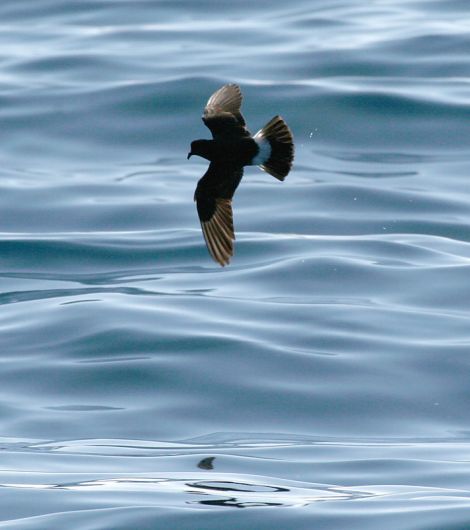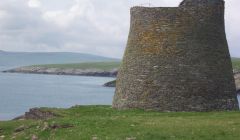Environment / New research reveals secrets of storm petrels
THE UK’s smallest sea bird, the storm petrel, nesting in the walls of Mousa’s Iron Age broch, regularly travels up to 300 kilometres to feed on plankton and small fish in the waters off Shetland.
New research work, which included four summers of fieldwork on the tiny island off the east coast of Shetland, gives a fascinating insight into the life of the little known bird.
Pioneering the use of GPS tags, scientists were able to get a unique insight into the behaviour of the night active sea birds which weight between just 25 and 30 grams.
The UK, and Shetland in particular, is key to the species. The colony studied on Mousa is home to 11,000 pairs and represents two per cent of the entire global population of the birds.
Researchers expected storm petrels (or alamooties in local dialect) to use waters at the edge of the continental shelf to the west of Shetland, where high concentrations of storm petrels have been reported in previous decades from boat surveys.
However, the study found that the Mousa birds concentrated on two main unexpected sites. One was 110 kilometres to the south of the colony and probably represented the areas birds were using for feeding.
The other high concentration of birds occurred in the waters surrounding the colony and reflected the commuting flights of the birds to and from their nests at night.
A total of 42 individuals were tracked over four breeding seasons. Foraging trips lasted between one and three days and they generally ranged up to 300 kilometres from the colony.
Become a member of Shetland News
One bird travelled almost 400 kilometres to the Norwegian coast. Researchers think it was blown off course in a storm. Amazingly the bird returned to the nest in just 24 hours.
Researchers said they had found no evidence of direct negative impacts on the birds from local industries, such as fishing and oil and gas, but stressed that the new insights should inform the development of industry and marine protection with an improved evidence base.
Paper author Mark Bolton said: “This was ambitious research and provides the most comprehensive insight into how these tiny birds use our vast marine environment to feed and raise their young.
“The new insights about their behaviour demonstrate the value of fundamental science as well as providing an amazing window into the travels of our smallest seabird.”
Head of marine policy at RSPB Scotland Alex Kinninmonth added: “Embracing this game-changing technology has allowed us to build a more complete picture of the lives of these elusive birds.
“Without it any attempt to identify locations for conservation action or to assess the potential threats to the storm petrels from this important colony would have overlooked these key places.”
“Scotland’s seabirds are already in trouble and face an uncertain future, so expanding our knowledge of where they go at sea and why is vital to give them a fighting chance against ever increasing human-made pressures.
“New findings such as these must be heeded by governments as they regulate activity at sea if we are to see a reversal of downward trends.”
The research appears in the journal Bird Conservation International https://www.cambridge.org/core/journals/bird-conservation-international
Become a member of Shetland News
Shetland News is asking its many readers to consider paying for membership to get additional features and services: -
- Remove non-local ads;
- Bookmark posts to read later;
- Exclusive curated weekly newsletter;
- Hide membership messages;
- Comments open for discussion.
If you appreciate what we do and feel strongly about impartial local journalism, then please become a member of Shetland News by either making a single payment, or setting up a monthly, quarterly or yearly subscription.
































































